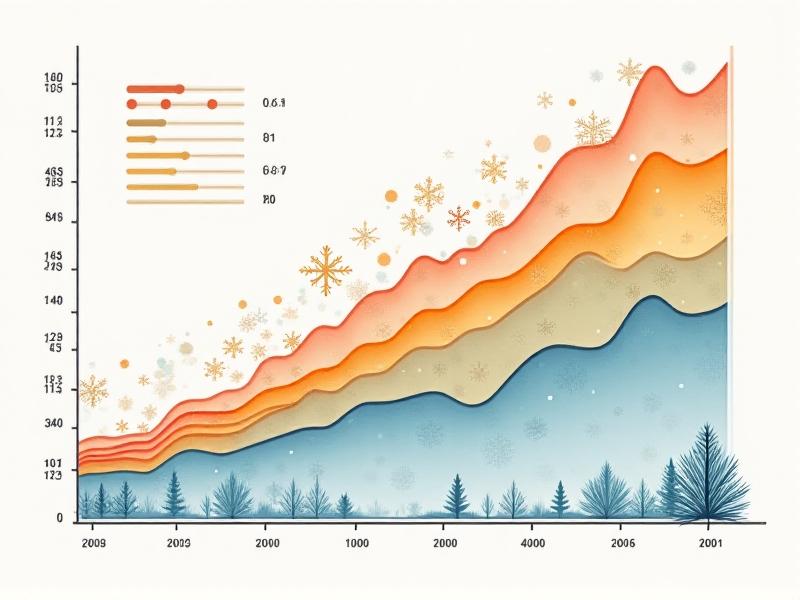Seasonal Flipping: Aligning Projects with Market Demand
Introduction to Seasonal Flipping and Market Alignment

In business, timing isn’t just a detail—it’s a decisive factor between stagnation and growth. Seasonal flipping, the practice of aligning projects with cyclical market demand, offers a roadmap to capitalize on predictable consumer behavior shifts. Whether it’s holiday retail spikes or summer travel booms, understanding these rhythms enables businesses to allocate resources strategically, optimize marketing efforts, and maximize revenue. This approach isn’t limited to traditional industries; even digital services see fluctuations tied to events like tax season or back-to-school periods. The key lies in recognizing patterns and transforming them into actionable strategies.
Understanding Seasonal Market Trends: The Foundation of Success

Seasonal trends are shaped by cultural, climatic, and economic factors. Retailers, for instance, prepare for Black Friday months in advance, while agriculture businesses pivot around harvest cycles. To identify these trends, analyze historical sales data, track search engine queries, and monitor social media conversations. For example, Google Trends reveals spikes in searches for “gardening tools” every spring or “ski resorts” in winter. By mapping these patterns, businesses can anticipate demand surges and avoid missed opportunities. However, trends evolve—climate change, for instance, alters traditional seasonal boundaries, requiring agility in strategy adjustments.
Identifying High-Demand Seasons for Your Industry

Not all industries share the same seasonal peaks. A tax consultancy firm thrives in Q1, while a swimwear brand peaks in Q2. Start by categorizing your product or service as evergreen, seasonal, or event-driven. Conduct competitor analysis to identify gaps—e.g., launching Halloween-themed products in August to outpace competitors. Surveys and customer feedback can also reveal unmet seasonal needs. For instance, a pet supply company might discover demand for cooling mats in summer, creating a niche product line. The goal is to align offerings with when your audience is most receptive.
Strategic Planning: Timing Your Product Launches

Launching a product too early or late can dilute its impact. Consider the lead time required for manufacturing, marketing, and distribution. A holiday décor business, for example, should ship inventory by September to meet retailer deadlines. Use a backward-planning model: set the target launch date and work backward to establish milestones. Soft launches or pre-orders can gauge interest before full-scale releases. Additionally, align launches with cultural moments—e.g., a fitness app promoting “New Year, New You” campaigns in January. Flexibility is crucial; buffer periods help accommodate supply chain delays or unexpected demand shifts.
Leveraging Data Analytics for Precise Timing
Data analytics transforms guesswork into precision. Tools like Google Analytics, SEMrush, and CRM platforms track seasonal traffic and conversion rates. Predictive analytics models can forecast demand by correlating historical data with external variables like weather forecasts or economic indicators. For example, a beverage company might cross-reference temperature trends with sales data to stockpile inventory before a heatwave. A/B testing campaigns during low-season periods also provides insights for optimizing high-season strategies. The aim is to create a feedback loop where data continuously refines timing decisions.
Case Studies: Seasonal Successes and Pitfalls
Examining real-world examples offers actionable insights. Coca-Cola’s “Share a Coke” campaign leveraged summer’s social vibe by personalizing bottles, driving a 2% sales increase. Conversely, a major retailer once stockpiled winter coats based on outdated data, leading to steep discounts. Another success: Target’s back-to-school inventory algorithm, which factors in regional school start dates. These cases underscore the importance of data relevance and cultural resonance. Learning from others’ mistakes—like ignoring supply chain lead times—helps businesses avoid costly misalignments.
Adapting to Market Shifts: Agility in Seasonal Strategies
Market unpredictability—from pandemics to supply chain disruptions—requires agile frameworks. Build contingency plans for scenarios like delayed shipments or demand drops. During the 2020 lockdowns, restaurants shifted from dine-in to meal kits, tapping into home cooking trends. A modular inventory system, where products can be repurposed for multiple seasons, also mitigates risk. For example, a fashion brand might design convertible apparel suitable for spring and fall. Regularly revisiting and revising strategies ensures resilience against unforeseen shifts.
Tools and Technologies for Effective Seasonal Forecasting
Modern tools like Tableau, DemandWorks, and AI-driven platforms such as Blue Yonder offer granular seasonal forecasts. Social listening tools like Brandwatch track emerging trends, while weather APIs enable hyper-localized predictions. Retailers like Walmart use machine learning to adjust inventory based on real-time sales and weather data. Subscription-based businesses benefit from Recurly’s churn prediction models to anticipate seasonal cancellations. Integrating these tools creates a cohesive system where data informs every decision, from marketing budgets to staffing needs.
Marketing Tactics Tailored to Seasonal Campaigns
Seasonal marketing thrives on urgency and relevance. Limited-time offers (LTOs), themed email campaigns, and holiday countdowns drive action. For example, Amazon’s Prime Day creates a mid-year sales spike, while Starbucks’ Pumpkin Spice Latte campaign leverages autumn nostalgia. Geo-targeting adjusts messaging based on regional seasons—promoting rain gear in monsoon-prone areas. User-generated content campaigns, like GoPro’s winter adventure contests, deepen engagement. Aligning SEO keywords with seasonal searches (e.g., “best Christmas gifts”) further amplifies visibility.
Building a Sustainable Model for Seasonal Flipping
Sustainability in seasonal flipping balances short-term gains with long-term stability. Diversify offerings to include evergreen products that provide consistent revenue. For instance, a garden center might sell perennial plants alongside holiday-specific decorations. Invest in customer loyalty programs to maintain engagement during off-peak periods. Analyze seasonal profits to reinvest in R&D for future cycles. Collaborate with complementary businesses for cross-promotions—e.g., a ski resort partnering with a local gear rental shop. Ultimately, the goal is to create a flexible, repeatable framework that thrives across seasons.








